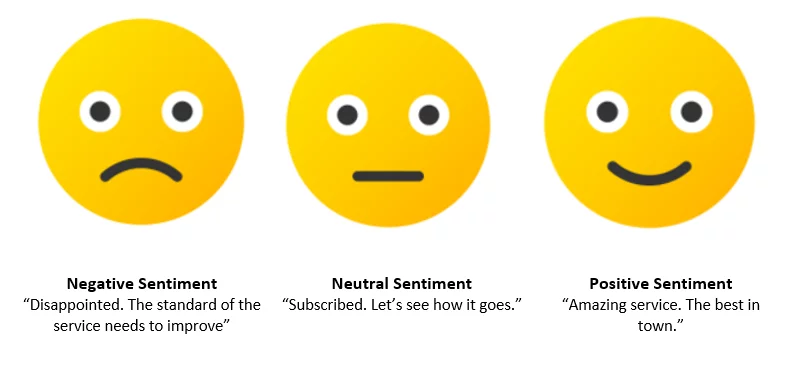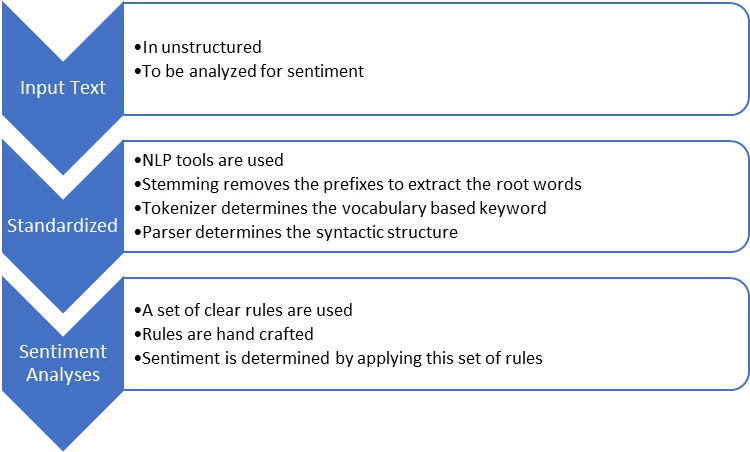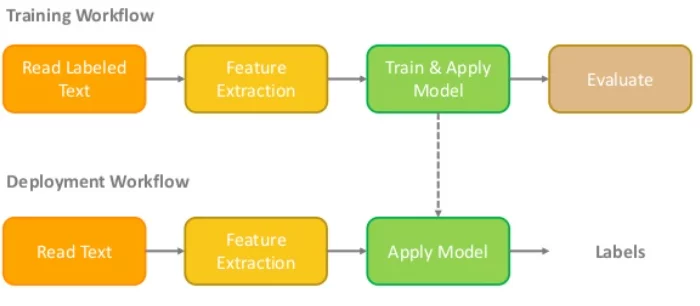This blog is divided into two parts. The first part introduces Sentiment Analysis. It explains why Sentiment Analysis is important for businesses and how Sentiment Analysis is done in theory. In the second part, we will learn how to implement an end-to-end Sentiment Analysis pipeline in Power BI, to harness its powers for informed decision-making from a business perspective.
What is Sentiment Analysis?
Sentiment Analysis, also known as opinion mining, is detecting the sentiment in data that is often textual. Sentiment Analysis is one of the hottest research areas within the field of Computer Science and Natural language Processing (NLP). In Sentiment Analysis, textual data is provided as an input to a classifier that applies various natural language processing and/or machine learning tools to classify the text as positive, negative, or neutral. Sentiment Analysis tools can handle various languages, detect sarcasm, and can understand common acronyms and chat slang such as lol, omg, etc.
Applications of Sentiment Analysis for Businesses:
Sentiment Analysis finds applications in different fields, including consumer businesses, finance, politics, marketing and public relations, and e-commerce. Within the business domain, the most common uses of Sentiment Analysis include:
Consumers’ Feedback:
One of the most common applications of Sentiment Analysis for businesses is to gauge user feedback. This helps businesses to improve their products and services. User reviews and comments provide an enormous opportunity for businesses to gain insights about the market, the consumers, and even their own products and services. Sentiment Analysis enables the voices of the consumers to be heard more readily by businesses.
Brand Reputation:
Another application of Sentiment Analysis is that of monitoring a brand’s reputation. With Sentiment Analysis, businesses can track their brand’s reputation over time and then analyze it to find the key influencers. Once they have the data about the brand reputation and the key influencers, they can use it to manage the reputation and consolidate or even improve it with informed decision-making.
Online Advertisement and Social Media:
Internet and social media are the cornerstones of this age of information. They not only shape opinions but also have the power to make or break businesses. Using Sentiment Analysis, businesses can optimize their online marketing strategies and thus can expand their customer base.
Explore Power BI's Features and Capabilities
How Sentiment Analysis Work:
Various methods can be used to implement Sentiment Analysis. The choice of the method depends on the business requirements, the data we have, and how accurate we want the Sentiment Analyzer to be. Broadly, Sentiment Analysis can be implemented using two methods:
- Rule-based or Lexicon-based
- Using Machine Learning
Rule-Based or Lexicon-based Sentiment Analysis:
The rule-based method first uses various Natural Language Processing (NLP) tools to transform the unstructured text data into a standardized form. The NLP techniques that might be used here are stemming (removing prefixes to extract root words), tokenizing (reducing words to vocabulary-based keywords), and parsing ( determining the syntactic structure), etc.
Once this is done, a rule-based approach uses a clearly defined set of rules and criteria to analyze the sentiment of the text. For example, it might use a list of polarized (positive and negative) words. It would then count and weigh the presence of such words in the given text to determine its sentiment.
Machine Learning:
Another method to achieve Sentiment Analysis is by using Machine Learning algorithms. In this method, Machine Learning algorithms are first trained on some labeled data for which we already have the Sentiments. The algorithm learns the patterns from this labeled data. We then test this algorithm on unlabeled data and fine-tune it. Once the algorithm performs to a satisfactory level, it can be implemented for business use.
Finally, it is also common to combine the rule-based and Machine L.earning methods into a hybrid method.
Conclusion:
To sum up, we have discussed what Sentiment Analysis is. We have learned how to use Sentiment Analysis to analyze a text to determine its sentiment. We have also discussed how Sentiment Analysis can be beneficial for businesses by helping them analyze customer feedback, manage brand reputation, and for online marketing and social media management. Finally, we also looked at the two main methods by which Sentiment Analysis is done.
Now that we understand the basics of Sentiment Analysis and its uses, in the next blog, we will learn how we can implement an end-to-end pipeline of Sentiment Analysis in Power BI using Azure Cognitive Services. Stay tuned!





